15 Ng. 100 Đ. Nguyễn Xiển, Thanh Xuân Nam, Thanh Xuân, Hà Nội 100000
Hidden amidst the rugged, mist-shrouded peaks and lush, untamed valleys of northern Laos, live the Akha Pala – a captivating ethnic subgroup whose vibrant traditions, distinctive craftsmanship, and profound connection to their ancestral lands offer an unparalleled window into the rich mosaic of Lao culture. Often dwelling in remote, high-altitude villages, the Akha Pala have meticulously preserved ancient customs, spiritual beliefs, and intricate sartorial artistry passed down through countless generations. A journey into the world of the Akha Pala is not merely a visit; it is an immersive, respectful pilgrimage into a community that epitomizes resilience, lives in intricate harmony with nature, and generously extends its warmth to those who approach with genuine curiosity and reverence. For the discerning traveler seeking authentic cultural immersion and a deeper understanding of Laos' diverse peoples, the Akha Pala present an extraordinary opportunity for connection, learning, and profound discovery.
The Akha are one of the most widely recognized and culturally distinct ethnic groups in Southeast Asia, with significant populations scattered across the mountainous border regions of Myanmar, Thailand, Laos, and Yunnan Province in China. They belong to the Tibeto-Burman language family, suggesting their ancient origins and migrations southwards over centuries. Within Laos, the Akha are primarily concentrated in the northern provinces, notably Phongsali, Luang Namtha, and Houaphanh.
Crucially, the Akha are not a monolithic entity. Instead, they are a fascinating tapestry of numerous subgroups, each possessing its own unique dialect, specific customary laws (Akha Zah), distinct social practices, and, most vividly, variations in their traditional dress and elaborate headgear. The Akha Pala stand out as one such prominent and culturally rich subgroup. Their name, "Pala," often refers to variations in their dialect or geographical location, and their unique identity is beautifully expressed through their particular style of women's headdresses, their unique village structures, and subtle differences in their customary laws compared to other Akha branches. Understanding this diversity is key to appreciating the depth and complexity of Akha culture in Laos. Their steadfast commitment to maintaining their cultural heritage, even as the modern world encroaches, makes their communities particularly compelling destinations for respectful cultural exploration.
The essence of the Akha Pala lies in their profound spiritual connection to the land, their intricately woven social fabric, and their stunning artistic expressions, which are seamlessly integrated into every facet of their daily existence. Their way of life offers a rare glimpse into a pre-modern existence, where sustainability is inherent and community is paramount.
The most striking and universally recognizable feature of the Akha Pala, especially their women, is their extraordinary traditional attire, particularly the elaborate headgear. Far more than mere decoration, these garments are a complex, living chronicle that visually communicates a wealth of information about the wearer – including their social status, age, marital status, and even the family's accumulated wealth and history.
Women's Headdresses: Masterpieces of Adornment: Akha Pala headdresses are distinct from other Akha subgroups, often characterized by their unique shape and the specific arrangement of their adornments. They can be large, conical, or cap-like, intricately hand-woven and then heavily embellished with a dazzling array of materials:
Silver Ornaments: These are the most precious components. Hundreds of antique silver coins (some dating back to French colonial times), exquisitely crafted silver beads, delicate chains, and intricately designed silver pieces (often stylized representations of cicada wings, flowers, or ancient symbols) are meticulously sewn or woven onto the headdress. The sheer quantity, weight, and age of the silver can indicate a family's prosperity and lineage. Silver is not just decorative; it's also believed to ward off evil spirits.
Feathers and Pom-poms: Often, vibrant feathers (sometimes from jungle fowl or specific birds, holding symbolic significance) and clusters of colorful woolen pom-poms (often red, orange, or black) are incorporated, adding height, texture, and a distinctive flair.
Beads, Cowrie Shells, and Embroidery: Glass beads of various colors, dried gourds, cowrie shells (once used as currency), and intricate cross-stitch embroidery in geometric or naturalistic patterns further enrich these ceremonial pieces.
Daily vs. Ceremonial: While simpler versions are worn for everyday tasks, the full, heavily adorned headdresses are reserved for special occasions, major festivals, significant ceremonies (like weddings or funerals), and when visiting other villages. Witnessing them in full regalia is a breathtaking cultural spectacle.
Traditional Garments: Akha Pala women typically wear short, fitted jackets adorned with intricate embroidery, appliques, and sometimes tiny bells or seeds that jingle with movement. These are paired with either long, dark skirts or practical trousers. Men's clothing is simpler, usually consisting of dark, hand-woven cotton jackets and loose-fitting trousers. The fabrics are traditionally hand-spun from cotton or hemp, and dyed using natural pigments extracted from local plants, yielding earthy tones of indigo, black, and rust.
Symbolism and Cultural Narratives: Every element, from the choice of fabric and dye to the specific patterns of embroidery and the arrangement of silver, holds deep symbolic meaning rooted in their animistic beliefs, their oral histories, and their connection to the natural world. Learning about these symbols, often explained by your guide, offers a profound understanding of their cosmology and artistry.
The Akha Pala worldview is deeply, inextricably rooted in animism – the ancient belief system that posits spirits (or "zah") inhabit all natural objects, phenomena, and even man-made structures. This intricate spiritual framework, known as the "Akha Zah" (Akha Law or Custom), governs every aspect of their daily lives, their relationship with the environment, their social order, and their understanding of well-being and illness.
Spirit Gates (Lo Cong): Guardians of the Village: A powerful and immediate visual representation of Akha animism is the "spirit gate" (Lo Cong) at the entrance of nearly every Akha village. Carved from wood, often featuring explicit figures representing male and female guardian spirits, these gates are believed to protect the village from evil spirits, disease, and misfortune. They demarcate the boundary between the "inside" (the safe, harmonious world of the village) and the "outside" (the wild, unpredictable world). Passing through them is a symbolic act of entering a spiritually protected space, and specific rules apply (e.g., often a men's and women's side, or prohibitions against carrying certain items through).
Ancestral Worship: Ancestors are not merely remembered; they are active presences in Akha spiritual life, believed to watch over, guide, and influence the living. Elaborate rituals, offerings of food and drink, and ceremonies are regularly performed to honor them, seek their blessings, and maintain familial harmony. Ancestor altars are common in homes.
Nature Spirits (Meezah): Spirits of the forest, mountains, rivers, specific trees, and even rocks are respected and appeased through various rituals. This reverence for nature reflects their deep ecological knowledge and understanding that their survival is intrinsically linked to the health of their environment. Disturbing certain natural sites without proper appeasement can lead to misfortune.
Shamanism and Ritual Specialists: Shamans (often referred to as "Akha Zah") and other ritual specialists play a crucial role in the community. They act as intermediaries between the human and spirit worlds, conducting healing ceremonies for illness, performing rituals for good harvests, divining the future, and guiding important life-cycle ceremonies (births, marriages, deaths).
Customary Law (Akha Zah): The Moral Compass: Beyond spiritual beliefs, "Akha Zah" refers to the comprehensive body of customary laws and practices that govern all aspects of Akha Pala social and moral life. This unwritten code dictates everything from agricultural practices and resource management to marriage arrangements, inheritance, conflict resolution, and the proper conduct of daily life. Adherence to Akha Zah is paramount for maintaining social order, communal harmony, and the well-being of the village in both the physical and spiritual realms. Violations can lead to social ostracization or spiritual retribution.
The Akha Pala are primarily subsistence farmers, living in close and intricate harmony with their mountainous environment. Their livelihoods reflect a deep, ancestral understanding of sustainable practices honed over centuries, allowing them to thrive in often challenging terrain.
Upland Rice Cultivation (Swidden Farming): The staple crop is rice, predominantly grown using traditional shifting cultivation (also known as swidden or 'slash-and-burn' farming) on hillside plots. This involves clearing small areas of forest, burning the vegetation to enrich the soil, cultivating for a few years, and then allowing the land to lie fallow for many years (often a decade or more) to regenerate. While often misunderstood by outsiders, traditional swidden is a sophisticated system that, when practiced correctly with sufficient fallow periods, is remarkably sustainable and biodiverse. The arduous process of planting (often using a digging stick), tending, and harvesting rice is central to their annual cycle and communal life.
Diverse Supplementary Crops: Beyond rice, they cultivate a variety of other crops for sustenance and local trade, including corn, beans, chilies, gourds, and various leafy vegetables, ensuring dietary diversity and food security.
Livestock Rearing: Small livestock such as pigs, chickens, and occasionally buffalo are raised not only for food but also play significant roles in ceremonial offerings and social exchanges.
Forest Resources: The Natural Supermarket: The surrounding forests are an invaluable resource, providing crucial supplementary food (wild edibles, mushrooms, fruits), medicinal plants (their traditional knowledge is extensive), bamboo for construction and crafts, and timber for housing. Their ability to forage and utilize forest resources is extraordinary.
Traditional Crafts: Art in Everyday Life: Craftsmanship is not merely a hobby but an integral part of their economy and cultural expression.
Textile Weaving: Akha Pala women are incredibly skilled weavers, producing stunning textiles from hand-spun cotton or hemp. Their designs feature intricate geometric patterns, often in bold colors, used for clothing, blankets, and bags. These textiles are often dyed with natural indigo and other plant-based dyes.
Silversmithing: While some silver ornaments are purchased or inherited, many Akha families have skilled silversmiths who handcraft the elaborate pieces for their headdresses and jewelry, a highly prized traditional skill passed down through generations.
Bamboo and Woodwork: Men and women craft various items from bamboo and wood for daily use, including baskets, tools, and household utensils.
Akha Pala society is characterized by a strong sense of communal identity and collective responsibility, governed by their customary laws and a clear, albeit informal, social hierarchy.
Village Leadership: Villages are typically led by a headman (often a respected elder), who is advised by a council of elders. Decisions are made collectively, usually through consensus, drawing heavily on the principles of Akha Zah.
Extended Family Units: The extended family is the fundamental cornerstone of Akha society. Multiple generations often live together under one roof, sharing resources, responsibilities, and wisdom. This strengthens family bonds and ensures cultural transmission.
Customary Law (Akha Zah): The Unwritten Code: As mentioned, the "Akha Zah" is the unwritten, customary law that governs all aspects of life. It provides a moral framework, defines rights and responsibilities, and outlines procedures for conflict resolution. Adherence to Akha Zah is crucial for maintaining social order, harmony, and the well-being of the community.
Festivals and Ceremonies: The Rhythms of Life: Life in Akha villages is punctuated by a rich calendar of festivals and ceremonies throughout the year. These are often tied to agricultural cycles (planting, harvest), ancestral worship, rites of passage (birth, marriage, death), or seasonal changes. These events are vibrant occasions for community gathering, elaborate feasting, traditional music and dance, and the spectacular display of their finest traditional dress. They reinforce social bonds and cultural identity.
Communal Labor: Many tasks, particularly those related to rice cultivation (e.g., planting, harvesting), are performed communally, reinforcing interdependence and social cohesion.
For travelers genuinely seeking profound cultural exchange and an authentic glimpse into indigenous life, visiting Akha Pala villages offers an unparalleled opportunity. However, this privilege demands a highly mindful, respectful, and ethical approach to ensure that your presence is beneficial and not disruptive to these vibrant, living cultures.
Many Akha Pala villages are intentionally nestled in remote, high-altitude mountainous areas, reflecting their historical desire for isolation and self-sufficiency. This means reaching them often involves a trek, which is an integral and enriching part of the experience.
Scenic and Challenging Routes: The treks typically lead through breathtaking landscapes of terraced rice paddies, dense bamboo groves, pristine jungle, and dramatic mountain ridges. These journeys offer stunning panoramic views and a chance to fully immerse yourself in the natural beauty that surrounds these communities.
Physical Demands and Preparation: The physical demands can range from moderate day hikes to more challenging, multi-day expeditions with significant elevation changes, depending on the specific village's remoteness and your chosen itinerary. A reasonable level of physical fitness, sturdy footwear, and prior trekking experience are often recommended.
Guided Expeditions: The Essential Cultural Bridge: It is highly recommended, and indeed often essential, to visit Akha Pala villages with an experienced local guide, preferably one who speaks the local dialect or is from a neighboring ethnic group. They serve as:
Cultural Interpreters: Explaining customs, norms, and the significance of what you observe.
Linguistic Bridges: Facilitating communication and fostering genuine interaction.
Navigators: Guiding you safely through unfamiliar terrain.
Responsible Tourism Advocates: Ensuring your visit adheres to ethical guidelines and benefits the community.
The true heart of the experience lies in the quality of your respectful interaction with the Akha Pala people. This is an opportunity for two-way learning and connection.
Warm Welcome and Hospitality: The Akha are generally known for their warm hospitality, and their genuine smiles are infectious. Approaching with a respectful demeanor, open mind, and a few basic Lao phrases (e.g., "Sabaidee" - hello) goes a long way in fostering positive interactions.
Homestay Opportunities: Deep Immersion: In certain villages, responsible tour operators like Golden Trail Travel facilitate authentic homestay programs. This is an incredible opportunity for deep immersion, allowing you to live directly with an Akha family, share meals, observe their daily rhythms, and perhaps even participate in simple activities like cooking, pounding rice, or basic weaving (if invited). This experience fosters genuine personal connections and insights that no fleeting visit can provide.
Learning and Sharing: Be genuinely curious. Ask questions (through your guide) about their daily life, their traditions, their farming practices, and their spiritual beliefs. Be open to sharing stories from your own culture if invited; it's a mutual exchange that builds bridges.
Observe and Participate: Take the time to simply observe daily tasks – from women weaving on backstrap looms to men crafting tools, or children playing traditional games. If invited to participate in a task or ceremony, do so respectfully and with an open mind, following your guide's lead.
Local Markets: Visiting nearby district markets where Akha Pala people (and other ethnic groups) come to trade their produce, wild edibles, and handmade goods offers another lively and authentic interaction point. It's a fantastic place to observe their economic life and diversity.
Responsible tourism is not just a buzzword; it's a critical philosophy when visiting ethnic minority communities like the Akha Pala. Your mindful actions ensure your presence is beneficial and contributes to the preservation of their culture and environment, rather than inadvertently causing harm.
Support Local Economy Directly: One of the most impactful ways to support the community is by purchasing locally made handicrafts directly from the villagers or through your tour operator who ensures fair prices. This provides direct income and helps sustain traditional skills like weaving and silversmithing.
Respect Cultural Norms and Customs: Adhere strictly to guidelines provided by your guides regarding dress, photography, and behavior. Your guide will inform you about specific local taboos or protocols (e.g., rules about touching certain parts of their traditional headdresses, proper conduct when entering homes, specific rules around spirit gates, or avoidance of public displays of affection).
Photography Ethics: Always Ask First! This cannot be stressed enough. Always, always ask for explicit permission before taking photographs of people, especially women, children, and elders. A simple gesture and a polite "Laai dai bo?" (Can I take a photo?) in Lao, or letting your guide translate, is crucial. If they decline, respect their wishes without question. Avoid intrusive flash photography, especially at night or in homes.
Avoid Giving Sweets/Money to Children: While your intention may be kind, directly giving sweets or money to children can create a begging culture, foster dependency, and undermine parental authority within the community. If you wish to contribute, do so through a reputable tour operator (like Golden Trail Travel) or a designated community fund that supports education, healthcare, or sustainable development projects.
Minimize Environmental Impact: Practice "Leave No Trace" principles. Stick to designated paths, do not litter (pack out all your trash, including organic waste), and be mindful of your water and resource consumption. Be aware of fragile ecosystems.
Learn Basic Lao Phrases: Even a few basic greetings like "Sabaidee" (hello), "Khop Jai" (thank you), and "Bo Pen Nyang" (you're welcome/no worries) are greatly appreciated and show respect for their culture.
Be Patient and Flexible: Life in remote villages operates at a different, unhurried pace. Embrace the tranquility and be open to unexpected changes or delays. Your patience will be rewarded.
Embarking on a journey to the remote and culturally rich villages of the Akha Pala requires careful planning, deep cultural understanding, and a trusted partner committed to responsible tourism. Golden Trail Travel specializes in curating authentic, ethical, and unforgettable cultural experiences throughout Laos, making us your ideal choice for discovering the intricate world of the Akha Pala. Our commitment to sustainable tourism ensures your visit benefits both you and the communities you encounter.
Expertly Crafted Cultural Itineraries: We don't just organize visits; we design profound Akha Pala experiences. Our itineraries are meticulously crafted to facilitate genuine cultural immersion, respectful interactions, and seamless logistics, whether it's a day trek to a nearby village or a multi-day homestay adventure. We prioritize meaningful engagement over fleeting encounters, ensuring you gain a true understanding of their way of life.
Seamless Logistics & Comprehensive Support: Visiting remote Akha Pala villages can present unique logistical challenges. Golden Trail Travel handles every intricate detail with precision:
Transportation: Arranging comfortable and reliable transport from your starting point (e.g., Luang Namtha, Phongsali) to the trekking or village access points. This includes private vehicles and local transport where appropriate.
Permits and Fees: Securing all necessary permits for entering protected areas or specific villages, ensuring all local community fees and conservation contributions are paid directly and transparently.
Accommodation: Ensuring respectful and comfortable accommodation options, whether in carefully vetted homestays within Akha Pala villages or reputable local guesthouses in nearby towns.
Meals: Providing delicious, locally sourced meals that offer an authentic taste of traditional Lao and Akha cuisine, prepared hygienically.
Deep Cultural Understanding & Respect: Our team, especially our local guides, possesses a profound and nuanced understanding of Akha culture, customary laws (Akha Zah), and sensitivities. We prioritize respectful engagement above all else, ensuring that your interactions are authentic, welcomed, and mutually beneficial for both visitors and hosts. We provide comprehensive pre-trip briefings on essential cultural etiquette, helping you navigate interactions with confidence and respect.
Unwavering Commitment to Responsible and Ethical Tourism: Golden Trail Travel is dedicated to upholding the highest standards of responsible and sustainable tourism practices. We operate with a strong focus on:
Community Benefit & Empowerment: A significant portion of your tour fees directly benefits the Akha Pala communities. This includes fair wages for local guides and porters, direct payments to homestay families, and contributions to village development funds that support education, healthcare, or infrastructure projects chosen by the community. We ensure your tourism dollars create tangible, positive impact.
Cultural Preservation & Non-Interference: We work actively to ensure that tourism supports, rather than erodes, traditional customs and social structures. We advise against practices that might negatively impact the culture (e.g., giving gifts to children, encouraging begging).
Environmental Stewardship: We adhere to strict "Leave No Trace" principles, minimizing environmental impact during treks and village visits, and promoting sustainable practices among both our staff and travelers.
Ethical Photography Guidance: Our guides provide clear advice on how to engage in respectful and ethical photography, always emphasizing asking for permission.
Experienced and Knowledgeable Local Guides: Our tours are led by highly knowledgeable and personable local guides who are fluent in English and, critically, often speak local dialects or are themselves from ethnic minority backgrounds. They are invaluable cultural bridges, facilitating authentic communication, explaining complex customs, sharing fascinating insights into Akha life, and ensuring your safety and comfort. Their personal connections within the communities enhance your experience, making it deeply enriching and personal.
Tailored Cultural Experiences: We understand that every traveler has unique interests, a different pace, and specific learning objectives. While we offer compelling standard packages, we invite you to discuss your specific needs with our travel experts. We can customize your Akha Pala experience by:
Adjusting Duration: Offering options from single-day cultural visits to multi-day treks with extended homestays.
Focusing Interests: Tailoring the itinerary to emphasize specific interests, such as textile weaving workshops, learning about medicinal plants, exploring spiritual practices, or focusing on photography.
Integrating with Broader Itineraries: Seamlessly combining your Akha Pala visit with other incredible destinations and activities across Laos for a truly comprehensive adventure.
Ready to embark on an enriching and respectful journey into the heart of Laos' cultural diversity? Booking your authentic Akha Pala experience with Golden Trail Travel is straightforward, secure, and the essential first step towards a truly transformative adventure.
Visit our website at https://goldentrailtravel.com/ to explore our dedicated Laos Cultural Tours and Trekking & Adventure Tours that prominently feature experiences with the Akha Pala and other fascinating ethnic groups in northern Laos. Our user-friendly platform provides:
Detailed Itineraries: Comprehensive day-by-day breakdowns of what to expect, including cultural activities, trekking distances, and accommodation types.
Transparent Pricing: Clear costs with detailed inclusions and exclusions, so you know exactly what your trip entails.
Customer Testimonials: Authentic reviews from past travelers who have experienced the magic of Laos with us, offering valuable insights.
Easy Inquiry & Booking Process: A simple, secure system to ask questions, request custom itineraries, or directly book your spot.
You can easily inquire about a tour through our online contact form, or directly book your spot to secure your cultural adventure. Our dedicated travel experts are always on hand to answer any questions you may have, provide personalized advice, and assist you in customizing your ideal Akha Pala experience, ensuring it perfectly matches your dreams and desire for genuine cultural immersion.
To ensure a positive, respectful, and enriching experience for both you and the Akha Pala communities, thoughtful and thorough preparation is absolutely key. Your actions as a traveler directly impact the sustainability and authenticity of these unique cultural encounters.
Choosing the right time for your visit to Akha Pala villages impacts both trekking conditions and the likelihood of observing cultural events.
Dry Season (October to April): The Optimal Period
Weather: Generally the most popular and recommended time for trekking. Temperatures are cooler, humidity is lower, and there is significantly less rainfall, making hiking more comfortable and trails less challenging.
Accessibility: Roads and trails are typically in better condition, ensuring easier access to remote villages.
Festivals: This period often coincides with various traditional festivals (e.g., Akha New Year, harvest festivals – though specific dates vary year to year), which are vibrant opportunities to witness their culture in full, ceremonial display.
Green Season / Rainy Season (May to September): For the More Adventurous
Landscape: The countryside is incredibly lush, vibrant green, and waterfalls are at their fullest, offering stunning natural beauty.
Conditions: Can involve more challenging trekking due to consistently muddy, slippery trails and higher humidity. Some very remote villages might become temporarily harder or impossible to access by vehicle or even foot.
Authenticity: Fewer tourists during this period can offer an even more tranquil and authentic glimpse into their daily farming life.
Leeches: Be prepared for leeches in damp areas during this season.
Packing thoughtfully is paramount for comfort, safety, and cultural respect during your visit to remote Akha Pala villages. Keep it light, versatile, and suitable for potentially rugged conditions.
Footwear:
Sturdy Trekking Shoes/Boots: Essential for walking on uneven terrain, muddy paths, and potentially steep ascents/descents. Ensure they are well-broken-in and offer excellent grip and ankle support. Waterproof options are highly recommended.
Comfortable Walking Sandals/Flip-flops: For use around the village campsite or guesthouse in the evenings, allowing your feet to air out.
Clothing (Layering and Modesty are Key):
Lightweight, Breathable Base Layers: Long pants and shirts (covering shoulders and knees) are highly recommended. This is crucial for cultural respect, and also provides protection from sun, insect bites, and scratches from vegetation. Materials like quick-drying synthetics (polyester, nylon) or lightweight merino wool are ideal. Avoid cotton for trekking as it absorbs moisture and dries slowly, leading to discomfort and potential chafing.
Warm Mid-Layer: A light fleece jacket or a warm sweater is essential for cooler evenings and mornings in the mountains, especially during the dry season.
Waterproof Outer Layer: A lightweight, breathable waterproof rain jacket or poncho is always advisable, regardless of the season, for unexpected downpours.
Clean Clothes for Evening: One comfortable, dry set of clothes for relaxing in the village or homestay.
Bags:
Small Daypack (20-30L): For your daily essentials during treks (water, snacks, camera, rain gear, personal first-aid kit, small electronics).
Main Backpack (40-60L): For your main gear and clothing. This will be carried by porters if your tour includes them, or you will carry it yourself on lighter treks. Ensure it has a rain cover.
Sun & Insect Protection:
High-SPF Sunscreen: Reapply regularly, especially if trekking exposed areas.
Wide-Brimmed Hat or Cap: For sun protection.
Sunglasses: To protect your eyes from glare.
Insect Repellent: High-DEET (30-50%) or an effective natural alternative (e.g., picaridin, oil of lemon eucalyptus), applied regularly, especially at dawn and dusk. Consider permethrin-treated clothing.
Health & Hygiene:
Personal First-Aid Kit: Include band-aids, antiseptic wipes, pain relievers (e.g., ibuprofen, paracetamol), anti-diarrhea medication (e.g., Imodium), rehydration salts, blister treatment (Compeed is excellent), any personal prescription medications, and allergy medication.
Hand Sanitizer: Essential, as running water might be limited.
Biodegradable Toiletries: Small sizes are ideal if staying in a homestay or using basic facilities.
Small Quick-Drying Towel: Packtowl or similar.
Wet Wipes: Useful for quick clean-ups.
Hydration:
Reusable Water Bottle / Hydration Pack (2-3 Liters capacity): Crucial for staying hydrated throughout the day. Your tour operator will provide purified water, but having your own bottle is environmentally friendly.
Water Purifier / Purification Tablets: A good backup if you need to refill from natural sources (always consult your guide).
Electronics & Miscellaneous:
Camera & Spare Batteries/Memory Cards: Capture those incredible moments, but remember to ask permission for people. Consider a waterproof or water-resistant camera, or use a dry bag to protect your gear from moisture and dust.
Power Bank: To charge electronic devices, as electricity access in remote villages is very limited or non-existent.
Headlamp/Flashlight with Spare Batteries: Essential for navigating at night in villages or around homestays/campsites.
Small Amount of Lao Kip (Cash): For purchasing handicrafts directly from villagers or for small personal expenses. ATMs are non-existent in these remote areas.
Snacks: Energy bars, nuts, dried fruit for quick boosts during treks (though meals are provided).
Small Notebook & Pen: For journaling or jotting down observations.
Your safety and well-being are paramount. Adhering to these guidelines and trusting your experienced guides will ensure a secure and enjoyable expedition.
Medical Consultation: Consult your doctor or a travel health specialist well in advance (at least 6-8 weeks before your trip) about recommended vaccinations for Laos (e.g., Tetanus, Hepatitis A/B, Typhoid, Rabies, Japanese Encephalitis) and discuss any necessary malaria prophylaxis for the specific region you'll be visiting (northern Laos, especially rural areas, can have malaria risk). Be open about your remote travel plans.
Physical Fitness: Akha Pala treks can be physically demanding. Engage in regular cardio exercises (running, swimming, cycling) and strength training (especially legs and core) for several weeks or months before your trip. Practice hiking with a loaded daypack on varied terrain to build endurance.
Hydration: Stay hydrated by drinking plenty of purified water throughout the trek, even if you don't feel thirsty. Dehydration can quickly lead to fatigue, headaches, and other issues.
Food Safety: While homestay meals are often delicious and prepared with care, stick to freshly cooked food. Avoid raw or unpeeled fruits and vegetables unless you are confident of their cleanliness.
Follow Guides' Instructions: This is critical. Your local guides are intimately familiar with the terrain, weather patterns, potential hazards (e.g., slippery trails, local wildlife), and cultural protocols. Always listen attentively to their advice regarding routes, safety precautions, and appropriate behavior. Do not stray from the group or the marked trail.
Wildlife Awareness: While direct encounters with dangerous wildlife are rare, be aware of your surroundings. Do not approach or feed any wild animals. Observe them from a respectful distance.
Leeches: During the wet season or in damp forest areas, leeches can be present. Your guide can show you how to deal with them. Long socks tucked into trousers, gaiters, and repellent can help deter them.
Foot Care: Prevent blisters by wearing appropriate socks and well-broken-in boots. Treat any hot spots or blisters immediately to prevent them from worsening.
No Trace Policy: Crucial for environmental preservation and cultural respect. Pack out everything you pack in, including all trash (plastic wrappers, food scraps, etc.). Do not litter or leave any waste in the villages or surrounding natural areas. Use designated latrines or follow your guide's instructions for appropriate waste disposal in remote settings.
Your respectful behavior is paramount to ensuring a positive, sustainable, and non-disruptive interaction with the Akha Pala communities.
Dress Modestly and Respectfully: Always cover your shoulders and knees, especially when entering homes, temples, or interacting with elders. This shows respect for local customs.
Always Ask for Permission to Photograph: This is the single most important rule. Never take pictures of people, especially women, children, and elders, without asking for explicit permission first. A simple gesture and a polite "Laai dai bo?" (Can I take a photo?) in Lao, or letting your guide translate, is essential. If they decline, respect their wishes without question or argument. Avoid intrusive flash photography, especially at night or in dimly lit homes.
Remove Shoes Before Entering Homes or Temples: It is customary and expected to remove your shoes before entering any home or public building like a temple.
Respect Private Property: Do not enter people's homes or private areas without an explicit invitation from the owner.
Avoid Public Displays of Affection: Public displays of affection are not customary in Laos and can be considered inappropriate or offensive.
Do Not Touch Heads: The head is considered sacred by many Akha and Lao people. Do not touch anyone's head, especially children's, even in a friendly gesture.
Do Not Point with Your Feet: Feet are considered the lowest and least clean part of the body. Do not point your feet at people, Buddhas, sacred objects, or food. When sitting, try to tuck your feet under you or away from others.
Bargaining (if applicable): If buying handicrafts in markets or villages, a little gentle bargaining is often acceptable, but do so politely and with a smile. Don't over-bargain for small amounts; remember that these items are often the main source of income for the artisans.
Support Local Businesses Directly: Purchase handicrafts directly from villagers where possible, and dine at local, family-run eateries. This ensures your money directly benefits the local economy.
Learn a Few Basic Lao Phrases: Even simple greetings like "Sabaidee" (hello), "Khop Jai" (thank you), and "Bo Pen Nyang" (you're welcome/no worries) are greatly appreciated and can facilitate friendly and memorable interactions. Your guide can teach you more.
Avoid Giving Money/Sweets/Gifts Directly to Children: While your intention may be kind, directly giving money or sweets to children can inadvertently create a begging culture, foster dependency, and undermine parental authority within the community. If you wish to contribute, do so through a reputable tour operator (like Golden Trail Travel) or a designated community fund that supports education, healthcare, or sustainable development projects. Your guide can advise on the most appropriate ways to support the community.
Be Patient and Flexible: Life in remote villages operates at a different, often slower, pace. Embrace the tranquility, be adaptable to unforeseen changes or delays, and avoid rushing. Your patience and understanding will be well received.
Listen to Your Guide: Your guide is your cultural bridge. They will provide crucial insights into local customs and advise you on appropriate behavior. Always listen to and follow their instructions.
Here are answers to common questions about the Akha Pala people and visiting their communities, providing essential information for prospective cultural travelers:
Q1: Who exactly are the Akha Pala people? A1: The Akha Pala are a distinct ethnic subgroup of the larger Akha people, primarily found in the remote, mountainous regions of northern Laos (and also parts of Myanmar and China). They are known for their strong cultural identity, animistic beliefs, self-sufficient lifestyle, and particularly for their unique and elaborate traditional women's headdresses, which differ from other Akha subgroups.
Q2: Where in Laos can I visit Akha Pala villages? A2: Akha Pala villages are predominantly located in the northern provinces of Laos, such as Phongsali, Luang Namtha, and Houaphanh. Due to their remote locations, visiting often involves multi-day treks into the mountains.
Q3: Is it possible to do a homestay with an Akha Pala family? A3: Yes, in some Akha Pala villages, responsible tour operators like Golden Trail Travel facilitate authentic homestay experiences. This offers a deeply immersive opportunity to live with a local family, share their daily life, and gain firsthand insight into their culture.
Q4: What makes the Akha Pala headdresses so special? A4: Akha Pala women's headdresses are iconic cultural artifacts. They are intricately crafted, often adorned with hundreds of antique silver coins, silver beads, unique silver ornaments (like cicada wings), colorful woolen pom-poms, feathers, and elaborate embroidery. Each element signifies age, marital status, wealth, and cultural identity, making them a living chronicle of the wearer's life.
Q5: What are "spirit gates" and their significance in Akha villages? A5: Spirit gates (or "Lo Cong") are distinctive carved wooden gates found at the entrance of Akha villages. They feature figures representing guardian spirits and are believed to protect the village from evil. They symbolize the boundary between the natural world and the protected, harmonious space of the village. It's crucial to respect these gates and follow your guide's instructions when passing through them.
Q6: What should I bring as a gift if I visit an Akha Pala village? A6: It's generally best to avoid giving direct gifts, especially sweets or money, to children, as this can inadvertently create a begging culture. If you wish to contribute, consider bringing useful items for the community (e.g., school supplies, basic medical supplies arranged via your tour operator or a local NGO) or, ideally, purchase locally made handicrafts directly from the adults in the village. Your tour operator, Golden Trail Travel, can advise on the most appropriate and beneficial ways to contribute.
Q7: How does my visit to an Akha Pala village contribute to their community? A7: When organized through responsible tour operators like Golden Trail Travel, your visit directly contributes to the local economy through guide fees, porter wages, homestay payments, and direct purchases of handicrafts. This provides sustainable livelihoods and empowers communities to preserve their traditional way of life and cultural heritage.
Q8: What level of physical fitness is required for these cultural tours? A8: Visits to Akha Pala villages often involve trekking over uneven, mountainous terrain. While some villages might be accessible with shorter walks, many require moderate to challenging multi-day treks. A good level of physical fitness and comfort with walking for several hours a day is recommended. Your tour operator can advise on specific trek difficulties.
Q9: What are the key cultural etiquette rules I should remember when visiting? A9: Always ask permission before taking photos of people, dress modestly (cover shoulders and knees), remove your shoes before entering homes, do not touch anyone's head, and be mindful of spirit gates. Your Golden Trail Travel guide will provide a comprehensive briefing on local customs and taboos to ensure a respectful visit.
Q10: Can Golden Trail Travel arrange a specific tour focused entirely on Akha Pala culture? A10: Absolutely! Golden Trail Travel specializes in crafting authentic cultural experiences and tailor-made tours. You can visit their website at https://goldentrailtravel.com/ or contact their travel experts directly to discuss a customized itinerary focused specifically on the Akha Pala and their unique culture, or integrate it into a broader northern Laos adventure.
"Our cultural immersion with the Akha Pala people, meticulously arranged by Golden Trail Travel, was the most profound and humbling experience of our entire journey through Laos. The trek to their remote village was stunning, and the welcome we received was incredibly warm and genuine. Witnessing the women in their full, intricate headgear was simply mesmerizing – truly a living art form. Our guide was an exceptional cultural bridge, patiently explaining traditions and facilitating authentic interactions. This is what ethical, meaningful travel truly means." - Dr. Eleanor V., Cultural Anthropologist, USA (October 2024)
"I've always been fascinated by indigenous cultures, and the Akha Pala far exceeded my expectations. The depth of their animistic beliefs, expressed through their spirit gates and daily rituals, was truly eye-opening. We did a homestay, and living simply with a family, sharing meals, and observing their life in harmony with nature was unforgettable. Golden Trail Travel handled every logistical detail flawlessly and with a clear, unwavering commitment to responsible tourism. It's more than a tour; it's a transformative learning journey." - David P., Documentary Filmmaker, Canada (November 2024)
"The Akha Pala women's silver headdresses are breathtaking works of art – so much history and meaning in every piece. Our visit with Golden Trail Travel allowed us to see their traditional weaving and even try a few steps of rice pounding. Our guide was incredibly knowledgeable, answering all our questions and ensuring our presence was always respectful. This experience solidified my belief in the power of conscious travel to preserve cultural heritage. I wholeheartedly recommend Golden Trail Travel for their ethical approach." - Sophie L., Textile Artist, France (December 2024)
"We were looking for an authentic, off-the-beaten-path experience in Laos, and our Akha Pala tour with Golden Trail Travel delivered beyond measure. The trek was challenging but rewarding, leading us to a village where the sense of community was palpable. We learned simple phrases, laughed with the children, and felt truly welcomed. The direct way our tour supports their livelihoods made the experience even more meaningful. Thank you, Golden Trail Travel, for such an enriching and responsible adventure!" - Aisha R. & Ben J., Ethical Travelers, UK (January 2025)
"As a photographer, the Akha Pala provided endless inspiration – the vibrant colors, the weathered faces, the stunning landscapes. Golden Trail Travel understood my needs perfectly and ensured I had ample opportunities to capture their essence, always with the utmost respect and permissions. Their meticulous planning and deep cultural understanding are truly commendable. This was a highlight of my Southeast Asia travels." - Marco A., Photojournalist, Italy (February 2025)
The Akha Pala represent a vibrant, resilient, and profoundly rich thread in the intricate tapestry of Laos' diverse ethnic landscape. A journey into their world is not merely a vacation; it's an invitation to step back in time, to witness ancient traditions that have courageously withstood generations, and to connect with communities whose lives are deeply interwoven with the rhythms of nature and the timeless wisdom of their ancestors. From their iconic, silver-adorned headdresses that tell stories of lineage and status, to their deeply rooted animistic beliefs that guide every aspect of their existence, and their self-sufficient livelihoods forged in harmony with the mountains, every facet of Akha Pala culture offers an unparalleled and authentic glimpse into the very soul of northern Laos.
This is an immersive experience that demands not only physical preparedness but also profound respect, genuine openness, and a sincere desire to learn. By engaging with the Akha Pala thoughtfully, ethically, and with the guidance of knowledgeable local experts, you not only gain incredible, life-altering insights but also contribute directly to the crucial preservation of their precious cultural heritage and the sustainable development of their vibrant communities. Your responsible presence helps ensure that the Akha Pala can continue to thrive, maintaining their unique identity for generations to come.
For an unparalleled cultural adventure, meticulously planned and executed with the utmost reverence for local traditions, community well-being, and environmental stewardship, let Golden Trail Travel be your trusted and experienced guide. Our local expertise, unwavering commitment to ethical practices, and seamless logistics ensure that your journey to the Akha Pala villages is not just a trip, but a truly transformative exchange that enriches both you as a traveler and the remarkable communities you encounter.
Ready to uncover the fascinating world of the Akha Pala and experience the enduring spirit of northern Laos? Visit https://goldentrailtravel.com/ today to explore our exclusive cultural immersion tours and book your unforgettable ethical adventure! Your journey into authentic, responsible Laos begins here

.jpg)
That era is over. The rise of the electric bicycle has fundamentally redefined travel here. E-Bike Vietnam Cycling Holidays offer a revolutionary path, making the country’s most challenging and breathtaking routes, such as the legendary Ha Giang Loop and the Ho Chi Minh Trail, fully accessible to riders of all fitness levels. The E-Bike transforms the journey from a feat of pure endurance into an immersive cultural and scenic delight, allowing you to achieve a profound feeling of conquest while channeling your energy into savoring the profound closeness to nature and the genuine warmth of the local communities.
October 06, 2025
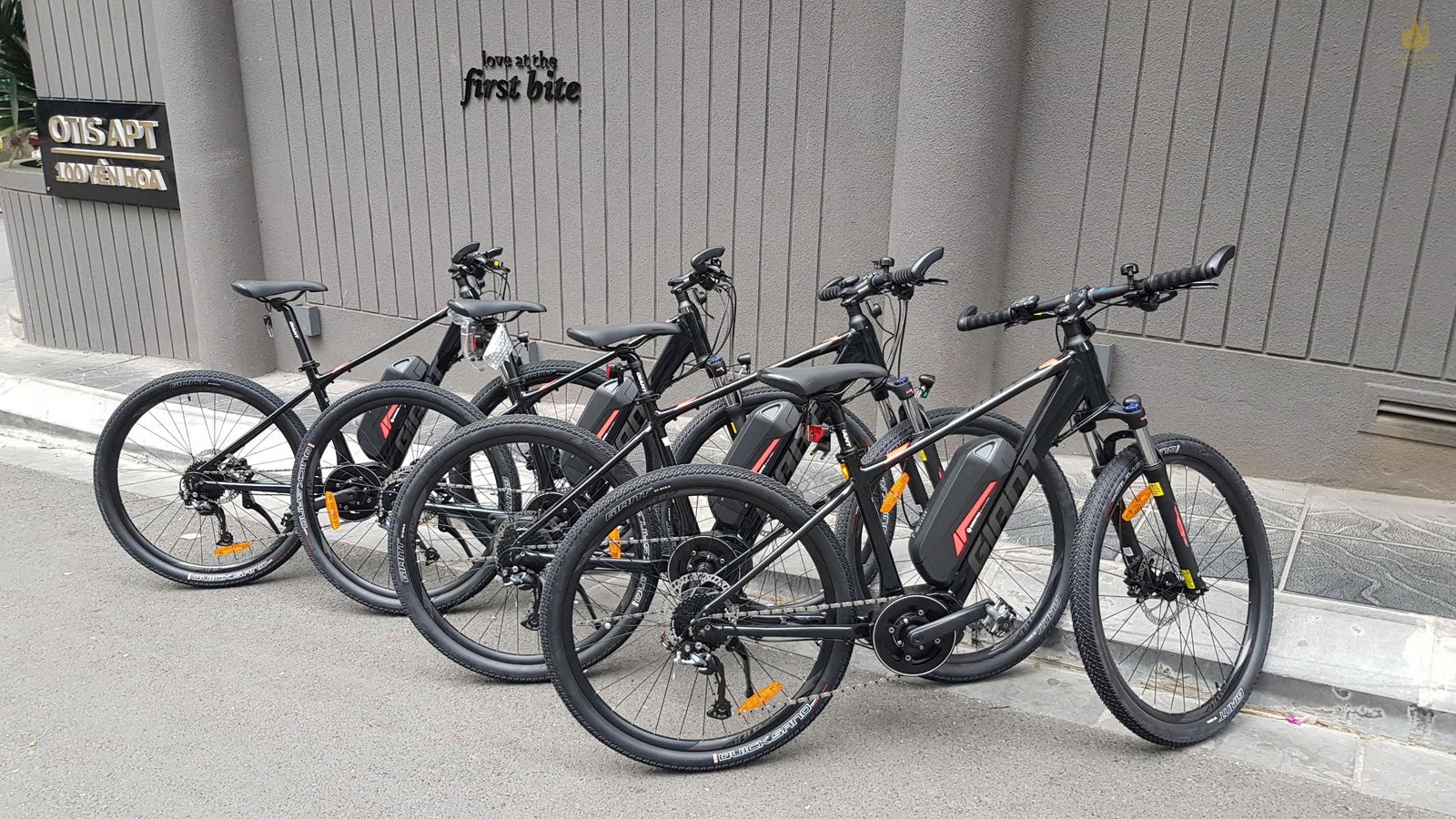
Vietnam, a country famed for its spectacular mountain passes, lush rice terraces, and complex network of historic trails, has long been a dream destination for cyclists. Yet, its challenging geography—characterized by scorching heat, punishing humidity, and immense vertical climbs—often reserves the most breathtaking routes for only the fittest elite. This barrier has now been shattered. The advent of E-Bikes Cycling Vietnam has democratized the adventure, making the country’s most remote and beautiful landscapes accessible to riders of all ages and fitness levels.
October 06, 2025
.jpg)
For the dedicated gravel cyclist, Southeast Asia represents the pinnacle of mixed-terrain exploration. While individual countries offer stunning challenges, the true masterpiece lies in combining them. The cross-border adventure spanning Gravel bike riding in Vietnam and Laos is an unparalleled journey, seamlessly blending the soaring karst mountains of Northern Vietnam with the quiet, forested plateaus and historical trails of Laos.
October 06, 2025
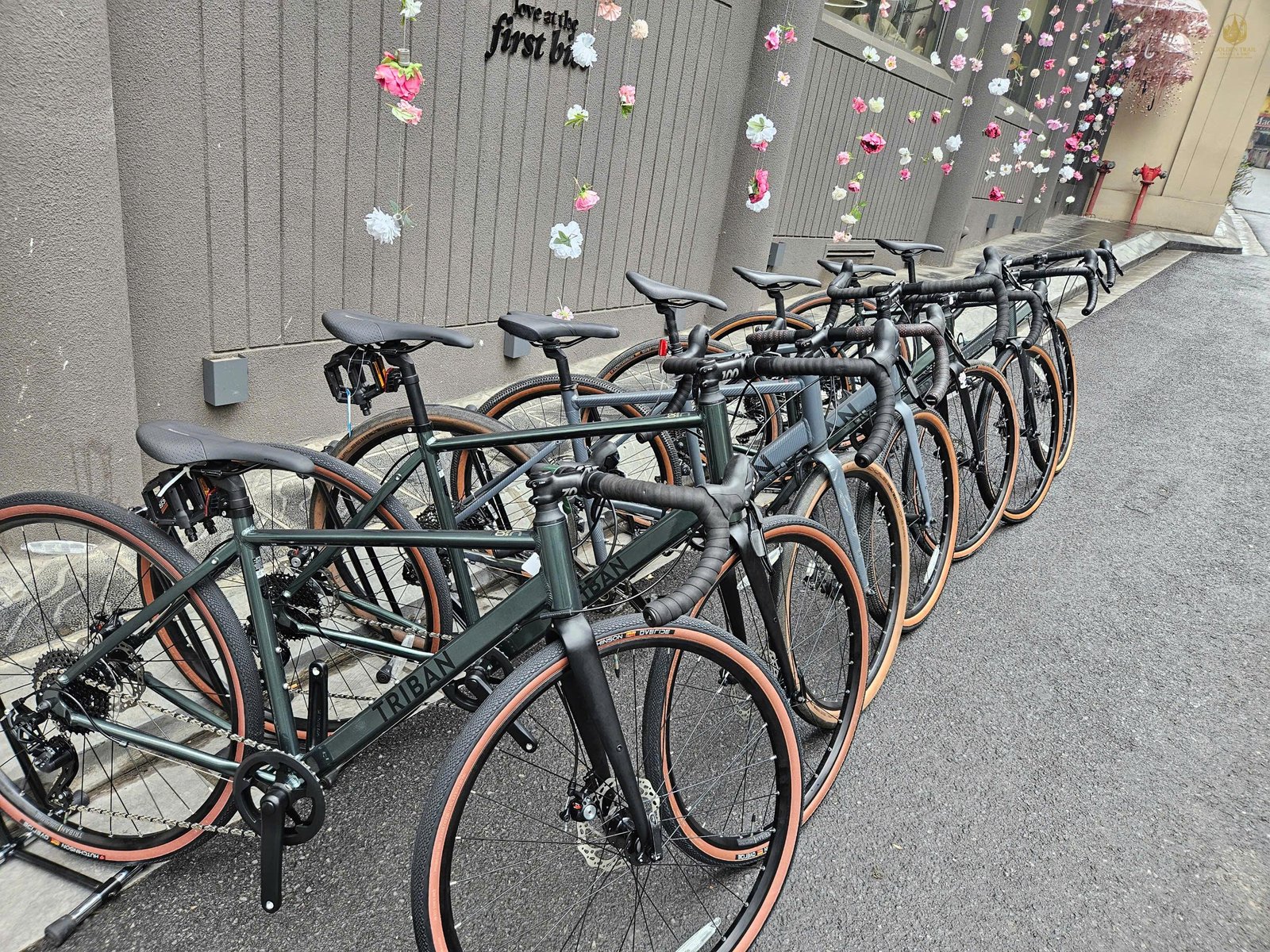
The Ho Chi Minh Trail (HCT)—Đường Trường Sơn in Vietnamese—is more than just a route; it is a legendary tapestry woven from history, endurance, and raw, untamed landscape. While many know the HCT as a symbol of wartime resilience, today it represents the ultimate pilgrimage for the modern adventurer. Forget crowded highways and tourist buses
October 06, 2025

Vietnam is not merely a destination; it is an epic, sensory overload, a land waiting to be discovered inch by inch. While motorbike journeys and bus tours follow the predictable highways, the true soul of this nation—its quiet valleys, timeless hamlets, and untamed mountains—is revealed only to those who dare to take the dirt road.
October 06, 2025

What to Bring on a Vietnam Bike Ride? It is important that the clothing you take on your cycling tour is appropriate for the trip you have chosen. There is a fine balance between taking too much and too little, especially considering that you need to equip yourself for differing levels of physical exertion and also for a range of climatic conditions.
September 09, 2025
.jpg)
Discover the magic of a Vietnam cycling holiday. Explore breathtaking landscapes, immerse yourself in local culture, and embark on an unforgettable adventure through mountains, coastlines, and deltas. Book your dream cycling trip today.
September 05, 2025
.jpg)
Embark on an unforgettable bicycle tour in Vietnam. Explore breathtaking landscapes, immerse yourself in local culture, and experience the ultimate cycling adventure through mountains, coastlines, and deltas. Book your dream bike trip today.
September 05, 2025
.jpg)
Embark on an unforgettable bike tour in Vietnam. Explore breathtaking landscapes, immerse yourself in local culture, and experience the ultimate cycling adventure through mountains, coastlines, and deltas. Book your dream bike trip today.
September 05, 2025
.jpg)
Discover the magic of a Vietnam cycling tour. Explore breathtaking landscapes, immerse yourself in local culture, and embark on an unforgettable adventure through mountains, coastlines, and deltas. Book your dream cycling trip today.
September 05, 2025
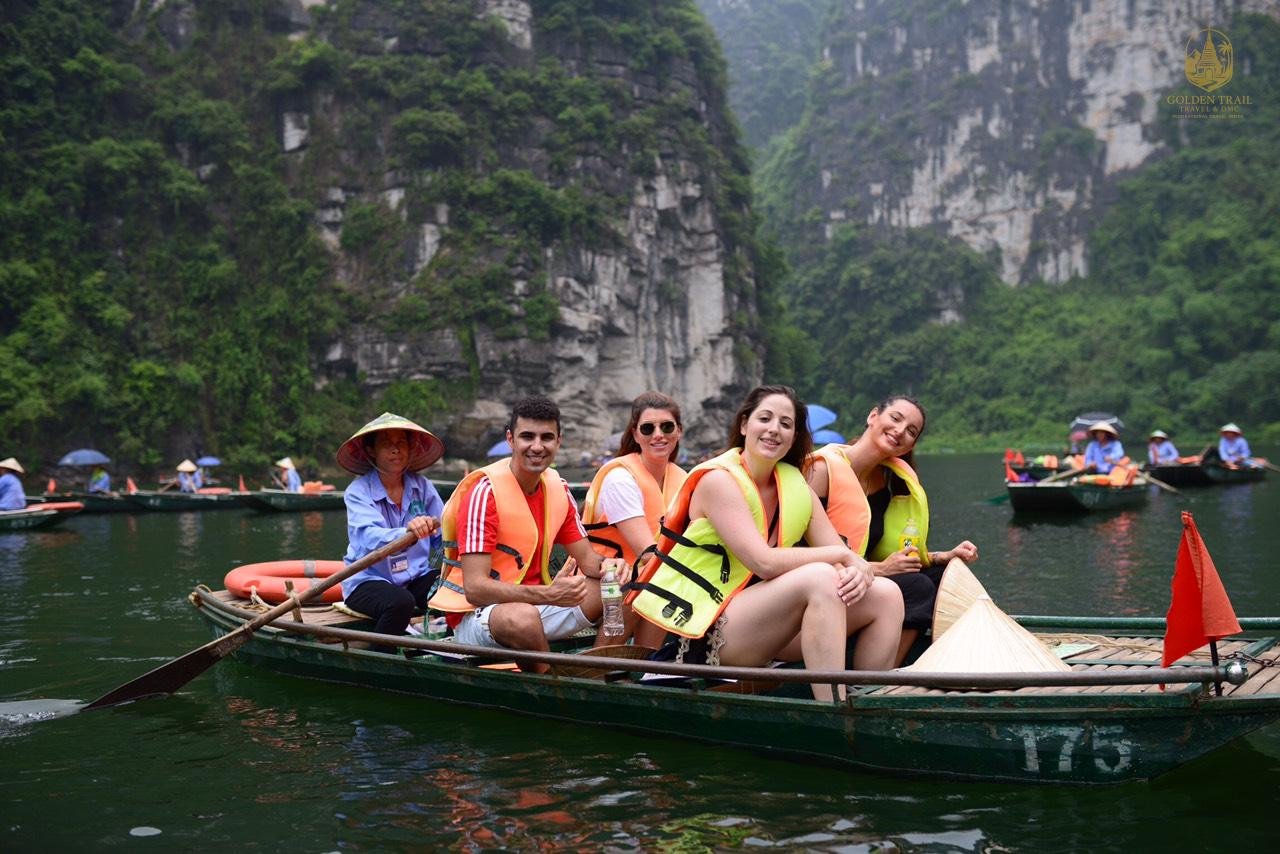
Embark on a serene Ninh Binh boat tour and discover the "Halong Bay on land." Glide through mystical caves and stunning limestone karsts in Tam Coc, Trang An, and Van Long. Book your unforgettable journey with Golden Trail Travel & DMC
August 29, 2025
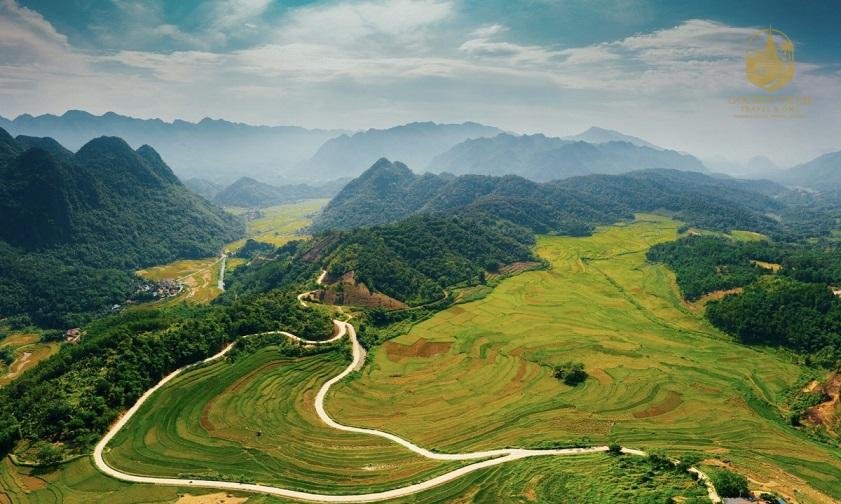
Discover the serene beauty of Pu Luong valley. Trek through lush terraced fields, experience authentic local life, and witness breathtaking landscapes. Book your Pu Luong tour with Golden Trail Travel & DMC.
August 29, 2025
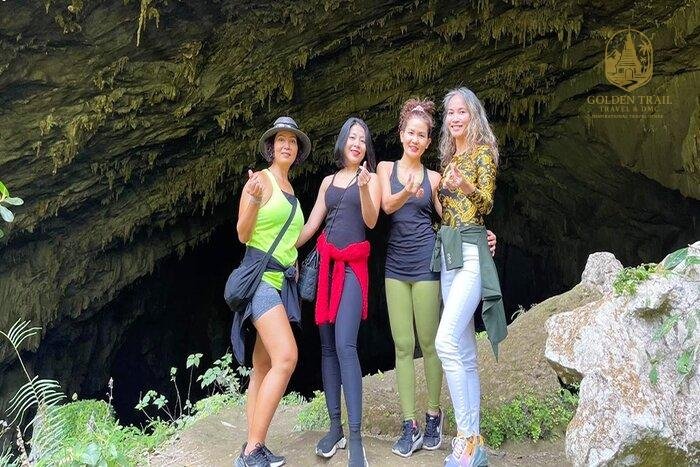
Journey into the heart of Pu Luong to Kho Muong Cave. Trek through stunning landscapes, explore a magnificent bat cave, and experience an authentic adventure. Book your tour with Golden Trail Travel & DMC.
August 29, 2025
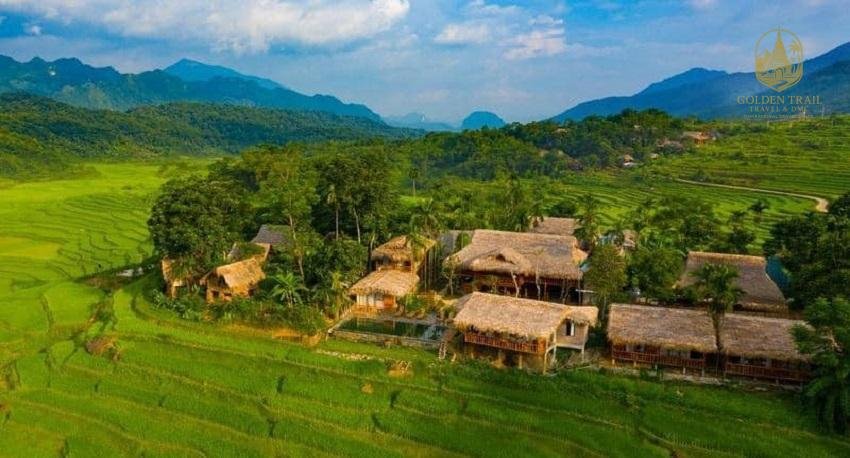
Discover the breathtaking views and authentic culture of Don village in Pu Luong. Trek to its magnificent viewpoints, experience local life, and witness stunning sunrises and sunsets. Book your tour with Golden Trail Travel & DMC.
August 29, 2025
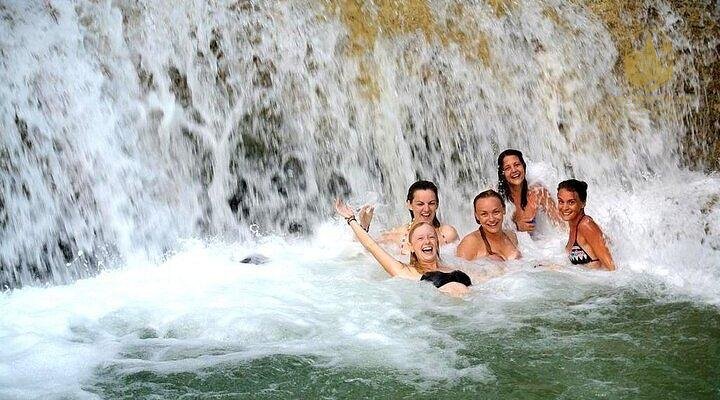
Discover the serene beauty of Hieu village & waterfall. Trek through stunning landscapes, swim in natural pools, and experience authentic local life. Book your adventure with Golden Trail Travel & DMC.
August 29, 2025

Discover the hidden gem of Kho Muong village in Pu Luong. Trek through stunning landscapes, explore a magnificent cave, and experience authentic local life. Book your adventure with Golden Trail Travel & DMC.
August 29, 2025
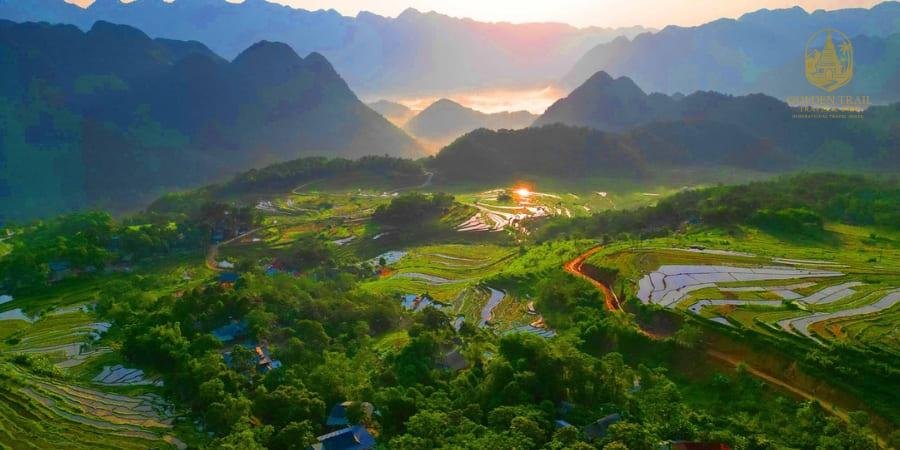
Witness the magic of a Pu Luong sunrise/sunset. Trek to the best viewpoints and experience the breathtaking colors, peace, and natural beauty. Book your Pu Luong tour with Golden Trail Travel & DMC.
August 29, 2025
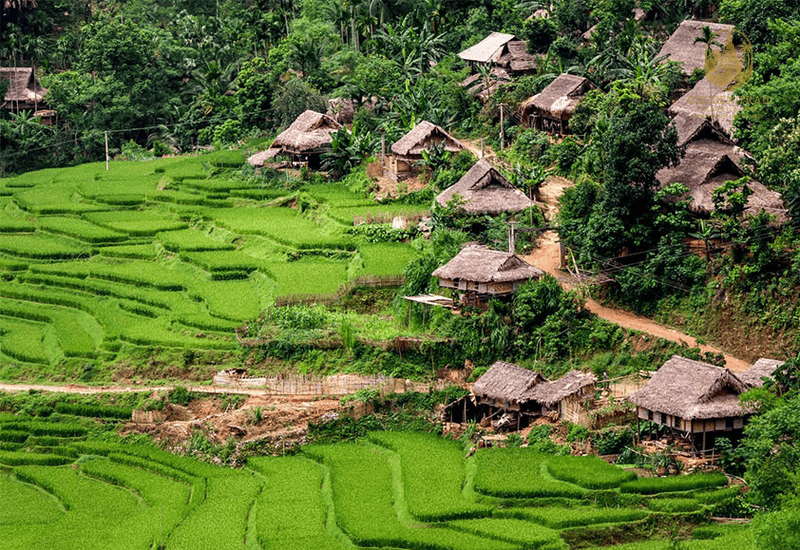
Journey into the soul of Pu Luong. Explore ethnic villages Pu Luong to experience a deep connection with local culture, life, and nature. Book an authentic tour with Golden Trail Travel & DMC.
August 29, 2025
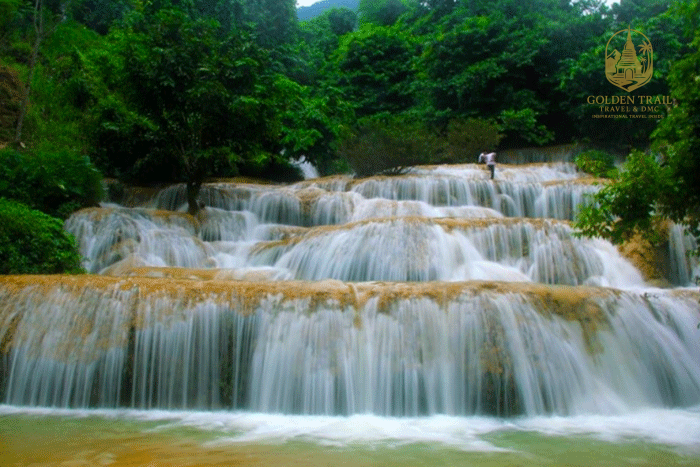
Discover the heart of Pu Luong with a trek to its majestic waterfall. Experience the ultimate journey of peace, conquest, and natural beauty. Book your Pu Luong waterfall tour with Golden Trail Travel & DMC.
August 29, 2025
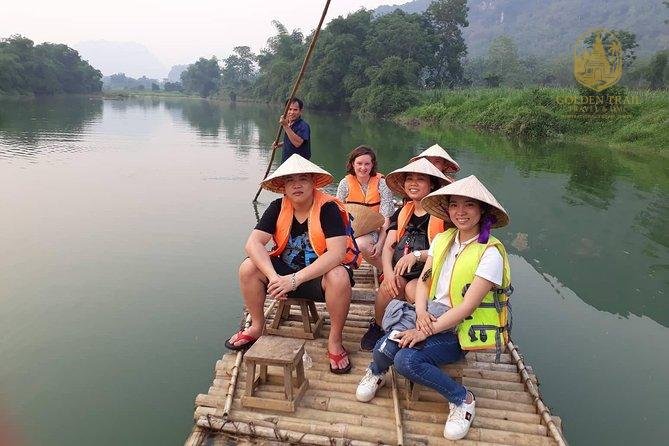
Drift into serenity with bamboo rafting Pu Luong. Discover the tranquility of the Cham Stream, iconic waterwheels, and lush landscapes. Book your unforgettable tour with Golden Trail Travel & DMC.
August 29, 2025